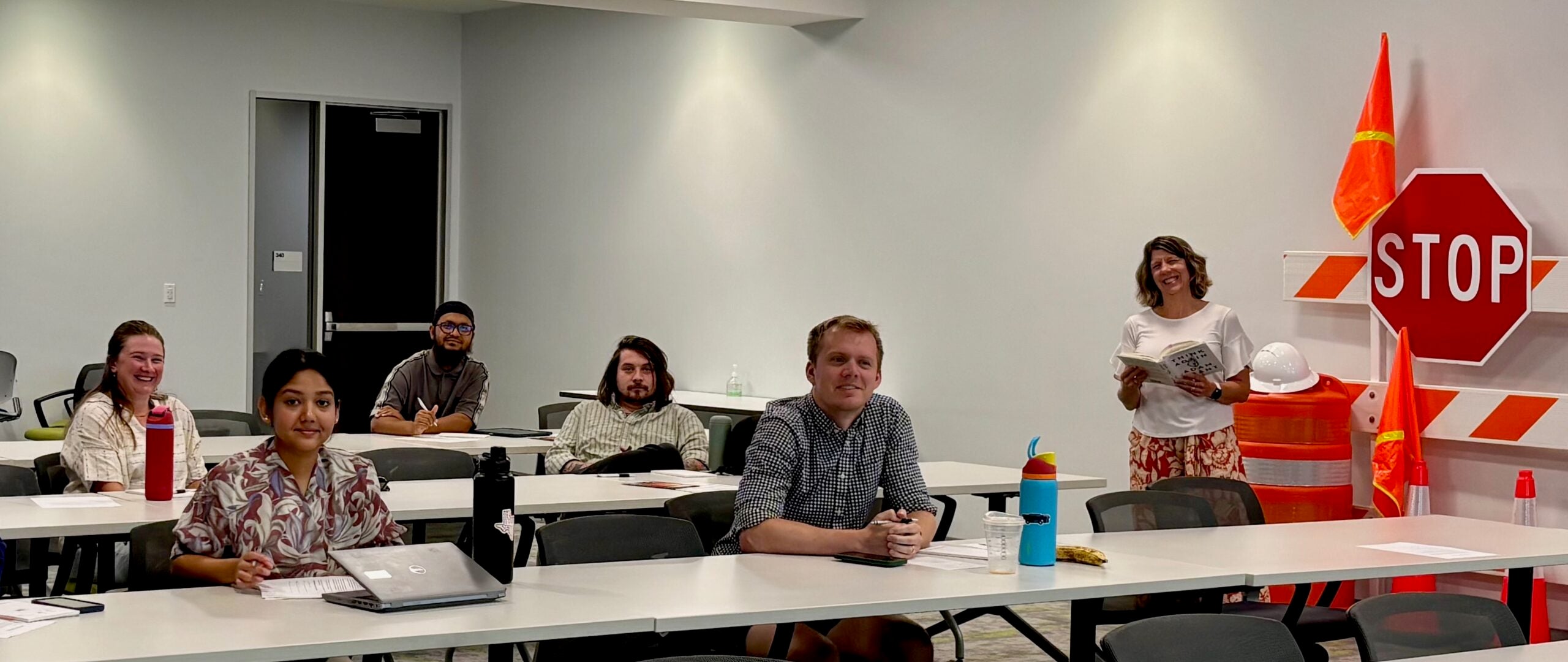
What comes to mind when you hear the word conflict? Maybe opposition, frustration, misunderstandings, stress—or even aggression. Most of us instinctively try to avoid it. But what if conflict, when handled constructively, is actually a key to innovation, growth, and better decision-making?
I’ve long been curious about how people can disagree without becoming polarized. My graduate work in Human Dimensions of Organizations (HDO) deepened that curiosity, offering insights into the psychology and dynamics of human interaction. This summer, I took that exploration further by completing a hands-on mediation training at the Dispute Resolution Center of Travis County, Texas (Austin DRC), becoming a qualified mediator.
And just this week, I had the opportunity to put some of that training into practice by leading a professional development session for Fellows at the City of Austin’s Transportation and Public Works Department. The session focused on how psychological safety and rethinking assumptions can transform conflict into a powerful tool for progress.
Drawing on behavioral science and the work of thought leaders like Amy Edmondson, Adam Grant, and Daniel Kahneman, participants were invited to reconsider how they engage with others—and with their own beliefs.
Psychological Safety: The Foundation for Growth
Citing Amy Edmondson’s research, the presentation emphasized that psychological safety—a climate where people feel safe to speak up, ask questions, and admit mistakes—is essential for constructive conflict. Participants were asked to reflect upon the environment they create for others.
As Edmondson stated: “What many people do not realize is that motivation by fear is indeed highly effective—effective at creating the illusion that goals are being achieved.”
In a hospital, an environment with extremely high stakes, Edmondson studied the impact of psychological safety on medication errors. She found that teams with greater psychological safety reported more errors—but also had better patient outcomes. Why? Because open communication allowed problems to surface and be addressed rather than remain hidden.
Allowing Constructive Conflict Creates a Path for Better Results
Through facilitated discussion, the Fellows and their mentors explored the various intersections between high and low psychological safety and high and low workplace standards, helping everyone to understand that the key to growth is the intersection between high psychological safety and a high level of accountability to standards. The goal is to cultivate a space where people feel comfortable voicing their opinion—particularly when they disagree—and where people also have clarity about how to achieve performance benchmarks. This is where creativity and innovation thrive.
The Power of Rethinking
One of the session’s central themes was the importance of rethinking—the ability to question our assumptions and remain open to other perspectives. As Adam Grant gets us to contemplate in Think Again, being open to rethinking is where disagreement becomes a path to deeper understanding rather than division.
Participants were invited to debate statements like, “following organizational best practices helps an organization be its best” and “when people are well managed, organizations are the most successful.”
These prompts sparked dialogue around how clear definitions, context, our experiences, and being open to alternative interpretations can all lead to better outcomes. Conversations encompassed questions such as, “if a work around exists, what does that say about the organizational ‘best practice’?” And, “if someone is ‘well managed,’ are they fully contributing or do they fear saying something outside of the team’s thoughts?”
The discussion revealed that what works in one setting may not work in another and being open to rethinking and constructive conflict can lead to needed change.
A Game: A Lesson in Perception from Kahneman
The session also included a cognitive exercise inspired by Daniel Kahneman’s work in Thinking, Fast and Slow. Participants examined ambiguous cues and were asked to describe what they thought might be happening. The twist? When groups are primed differently, dramatically different interpretations occur. For example, a group who has the context of numbers may describe a bank as a financial institution and a group who has the context of camping and kayaking may describe a bank as a riverbank. When given the clue “Ann approached the bank” our brains use context and experience to make quick judgments—which are mostly beneficial to helping us make efficient decisions. Yet, we all have our own unique experiences that prime us to reach conclusions. A discussion was held on the importance of asking questions and trying to understand one another’s perceptive when conflict arises.
The Kahneman Game explored questions such as:
– “How certain are you that you have a pretty accurate image of what’s happening at ‘the bank’?”
– “Are there other possibilities? Did you consider them?”
This exercise served as a powerful metaphor for workplace communication. Recognizing how important context and our diverse past experiences are helps teams avoid destructive conflict and instead fosters curiosity and collaboration.
Final Thought: Behavioral Science in Action
The session’s cast of characters—Edmondson, Grant, and Kahneman all come from liberal arts backgrounds, showing how the social and behavioral sciences can deeply inform business and organizational practices.
Their research helps us understand that constructive conflict isn’t about winning arguments—it’s about inviting insight, challenging assumptions, collaborative problem-solving, and building better outcomes together.
